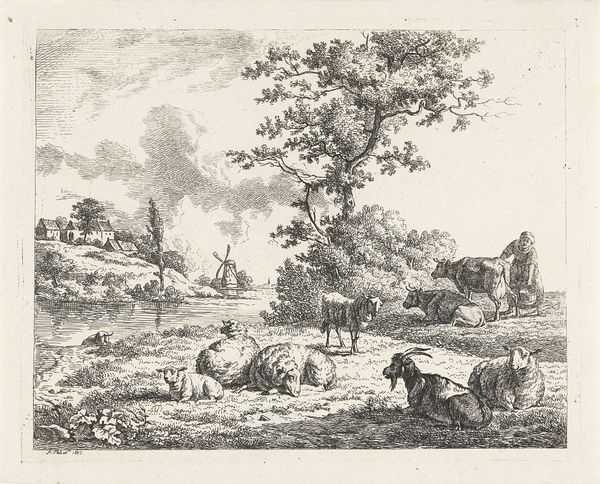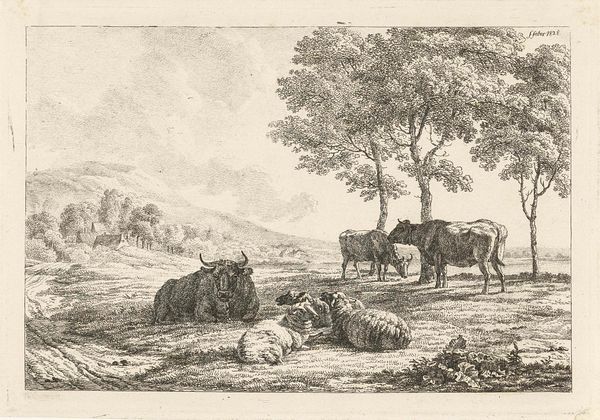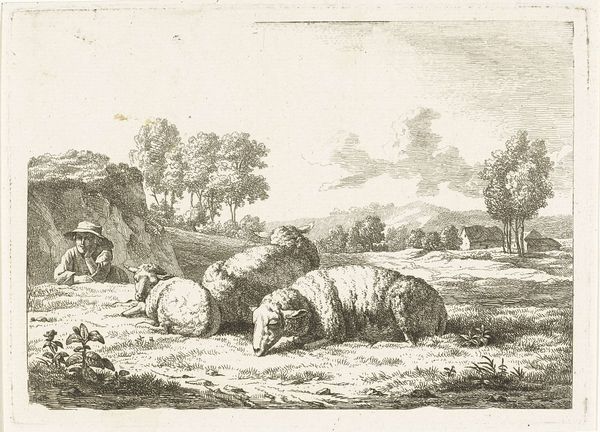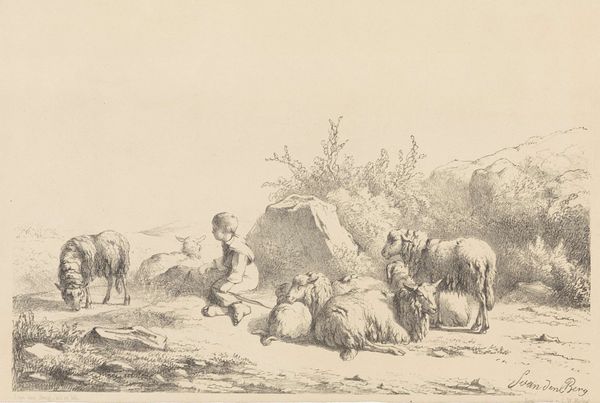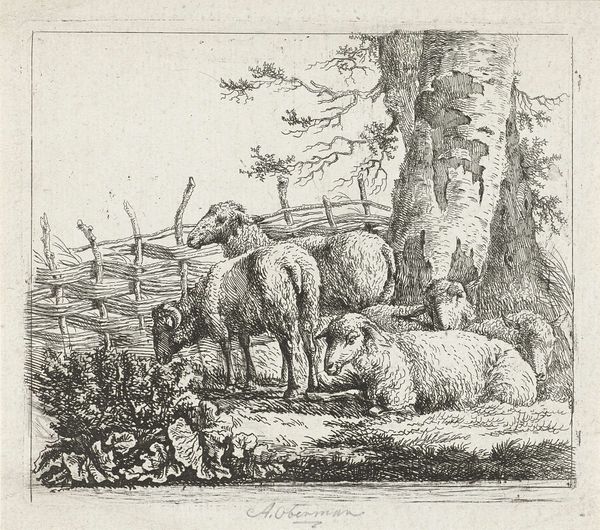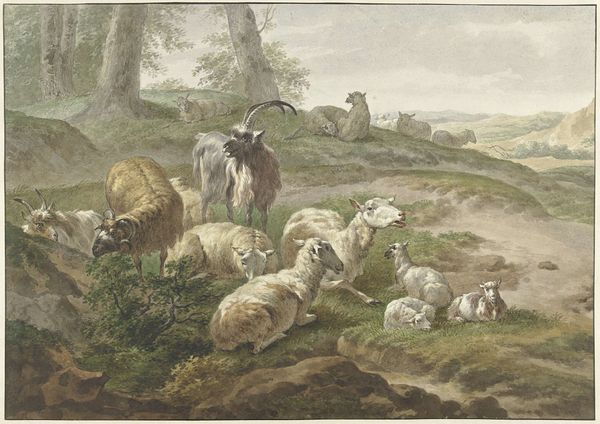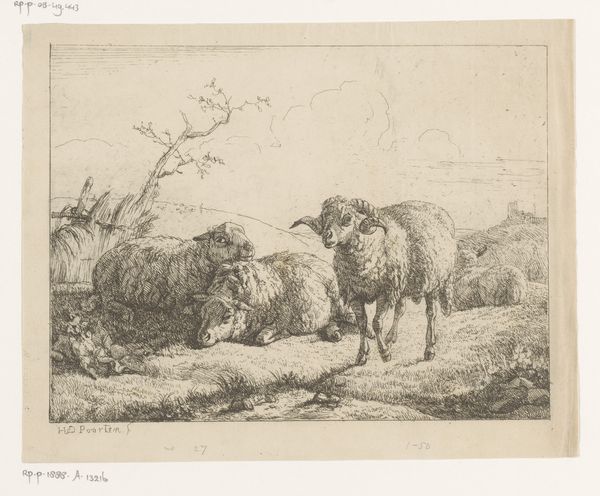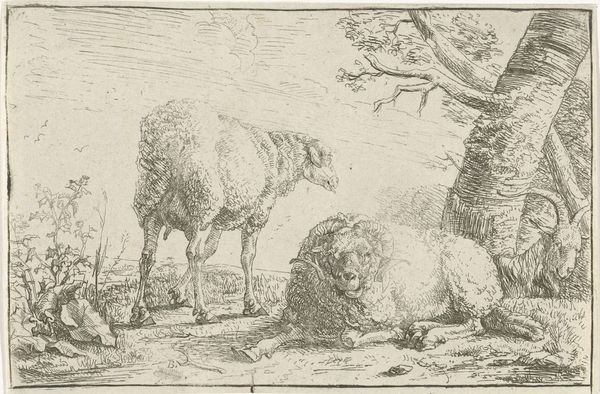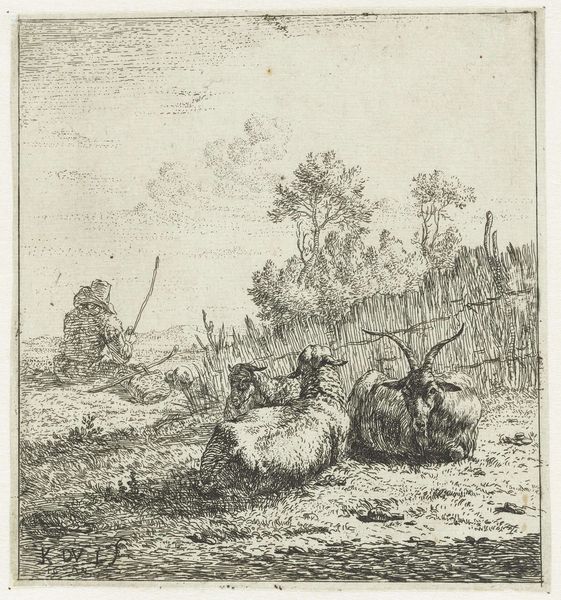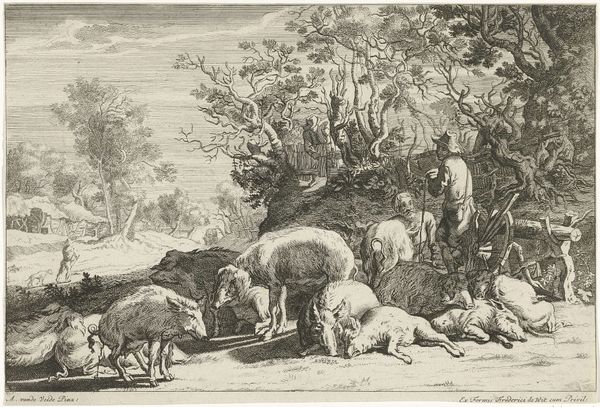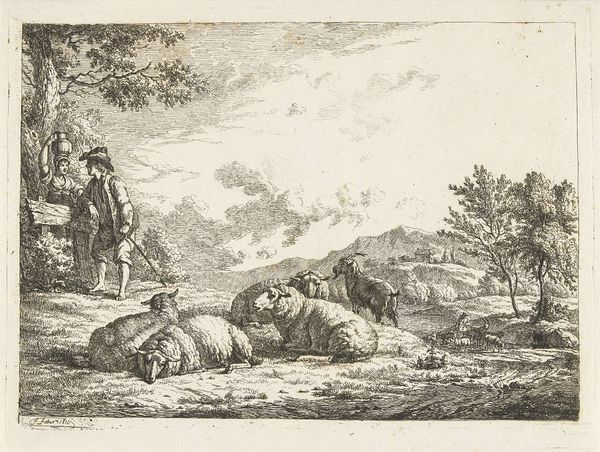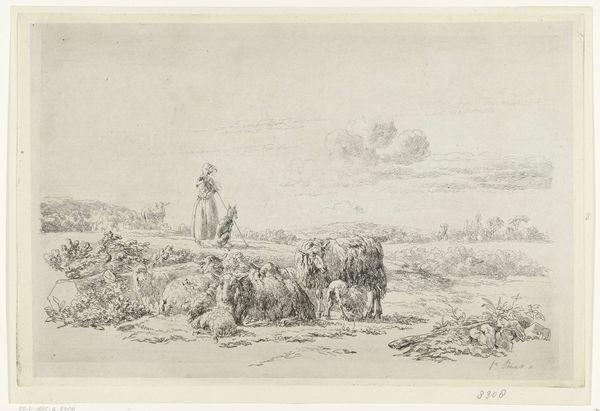
drawing, paper, ink, pastel
#
drawing
#
landscape
#
paper
#
ink
#
genre-painting
#
pastel
#
realism
Dimensions: height 148 mm, width 201 mm
Copyright: Rijks Museum: Open Domain
Frédéric Théodore Faber created this print of three sheep lying by a bare tree using etching techniques. An etching is made by drawing through a waxy ground on a metal plate, then exposing the plate to acid, which bites into the metal where the ground has been removed. This creates an incised line, which is then inked and printed. The process has a graphic directness that suits Faber’s subject. The etched lines describe the fleecy wool of the sheep and the rough bark of the tree. Look at the sky, which is rendered with many small strokes, giving a sense of atmospheric perspective. But why choose to make an etching of sheep in the first place? The answer lies in the social context. In the 18th and 19th centuries, as the textile industry grew, sheep became an important symbol of economic prosperity. Faber’s image is a celebration of the raw materials that drove the Industrial Revolution, reminding us that even seemingly simple artworks are connected to larger economic forces.
Comments
No comments
Be the first to comment and join the conversation on the ultimate creative platform.

